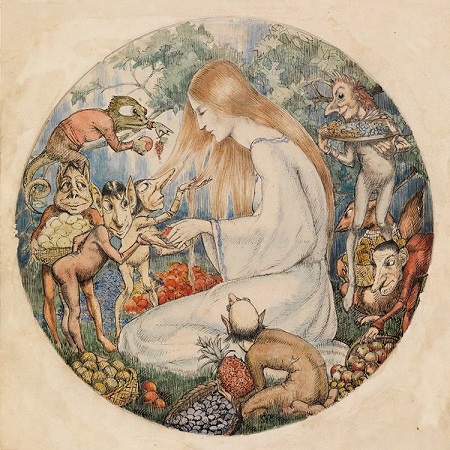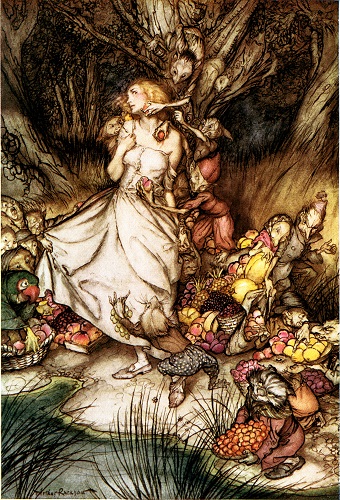
The following excerpt is from one of the most constitutive texts of the 20th century, The Madwoman in the Attic, by Sandra Gilbert and Susan Gubar:
Obviously the conscious or semi-conscious allegorical intention of this narrative poem is sexual/religious … Beyond such didacticism, however, ‘Goblin Market’ seems to have a tantalizing number of other levels of meaning – meanings about and for women in particular – so that it has recently begun to be something of a textual crux for feminist critics.
(Gilbert and Gubar, p. 566)
The main claim of the excerpt is that nineteenth-century women artists like Christina Rossetti actually helped to maintain the patriarchal values of the Victorian period. To demonstrate and support their argument, Gilbert and Gubar mainly focus on the interpretation of the poem “Goblin Market” by Rossetti.
The first example they use is the mere portrayal of Laura as a disobedient girl, for which she is punished throughout the text until she returns to the accepted feminine state of obedience with the assistance of her always-dutiful sister, Lizzie. Gilbert and Gubar also offer a sexual/religious allegorical interpretation: Laura’s insubordinate behavior and the eating of the forbidden fruit represent, in addition to the obvious comparison to Eve, the loss of her virginity and thereafter her consequent steep fall; then, the devoted and well-behaved Lizzie, like Jesus, ultimately redeems Laura from her sin.
Later on in the text, Gilbert and Gubar raise the parallelisms between “Goblin Market” and Milton’s Paradise Lost as another corroboration for interpreting the text as a religious allegory – which validates the proper and improper values of women in the Victorian period as demonstrated in “Goblin Market.” According to Gilbert and Gubar, the fatal backstory of the unruly Jeanie also contributes to the commemoration of proper traditional Victorian values by which women should abide, such as modesty, domestication and docility.
The final point of the critics is that “Goblin Market” and another poem of Rossetti, “From House to Home,” allegorize the Victorian perception of gender relationships in art: ultimately, solely self-deprecation and renunciation of their muse are appropriate for women poets, and therefore they should not roam free and wild within the metaphorical glen of imagination.

For me, the analysis and interpretation of Gilbert and Gubar were certainly helpful but not necessary. From an informed and educated contemporary perspective, most of the arguments of the excerpt were already established and could be independently inferred when reading “Goblin Market” even without previously reading Gilbert and Gubar’s text.
In the modern academic eye, Lizze’s successful endeavor toward status-quo meekness, Laura and Jeanie’s feminine defiance and their ensuing punishment are rapidly understood as anti-feminist and do not necessitate further elaboration. These current viewpoints and understanding are perhaps somewhat paradoxically due to culturally influential feminist works, such as Gilbert and Gubar’s, which are already embedded into at least some circles of Western society.
That is not to say that Gilbert and Gubar’s work is even slightly redundant, but on the contrary – that education that strives to encompass modern values of equality does slowly permeate and therefore should not be discarded but just further studied and emphasized. Who knows, with enough adequate education, one day, a woman might even become the leader of the free world.
Gilbert, Sandra M. and Susan Gubar. The Madwoman in the Attic: The Woman Writer and the Nineteenth-Century Literary Imagination, pp. 564-75. New Haven: Yale University Press, 1979.



